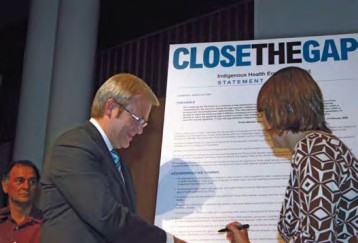Strengthening community action is about using the various communities within Australia to help make decisions, plan and implement health promotions and review their effectiveness. “At the heart of this process is the empowerment of communities – their ownership and control of their own endeavours and destinies.”
Strengthening community action is all about community involvement in the health promotion process. It draws on community resources in order to provide social support and and self-help for the community (i.e. the community helps itself). Strengthening community action also seeks “to develop flexible systems for strengthening public participation in and direction of health matters.”
The Ottawa Charter states:
Health promotion works through concrete and effective community action in setting priorities, making decisions, planning strategies and implementing them to achieve better health. At the heart of this process is the empowerment of communities – their ownership and control of their own endeavours and destinies.[1]
Strengthening community action results in communities being more responsible for their health and being more accepting of the health promotion initiative.
Strengthening community action example – Closing the Gap
The Closing the Gap campaign is a result of the 2005 Social Justice Report and the following National Indigenous Health Equality Campaign that was launched inn 2006 by:
- Human Rights and Equal Opportunity Commission
- National Aboriginal Community Controlled Health Organisation
- Australian Indigenous Doctor’s Association
- Congress of Aboriginal and Torres Strait Islander Nurses
- Indigenous Dentists’ Association of Australia
- Oxfam Australia
- Australians for Native Title and Reconciliation.
Both Indigenous and non-Indigenous health organisations and human rights organisations were involved in the campaign that was officially launched in April 2007 by by NACCHO, ANTAR and Oxfam Australia, united the voices of more than 40 organisations. This campaign lead to the Council of Australian Governments (COAG) (leaders of federal, state and territory, and local governments) committing to ‘closing the gap’ in life expectancy between Indigenous and non-Indigenous Australians in December of the same year.
The National Indigenous Health Equality Summit was then held in 2008. The Close the gap Indigenous health equality targets were presented at the summit and the Indigenous health equality summit statement of intent was signed.
Prime Minister Kevin Rudd then established the National Indigenous Health Equality Council, to provide national leadership in the campaign by bringing representatives from governments and the Indigenous and mainstream health sectors together. In 2008 the National Indigenous reform agreement was made providing the steps taken to achieve the Closing the gap targets, including “objectives, outcomes, outputs, performance measures, and benchmarks.”
Since this time the Closing the gap Prime Minister’s report has been presented to parliament and the targets and campaign adjusted according to the results being achieved.
Finally in 2013 the Australian Government released the National Aboriginal and Torres Strait Islander health plan after working in partnership with Indigenous people, Indigenous community groups, and peak bodies to a long-term, evidence-based policy framework.
Much of the example information is summaries from the Australian indigenous HealthInfoNet. For more information on the Closing the Gap campaign see here.
Resources
[1] http://www.who.int/healthpromotion/conferences/previous/ottawa/en/index1.html[2] http://www.healthinfonet.ecu.edu.au/closing-the-gap/key-facts/what-is-the-history-of-closing-the-gap
